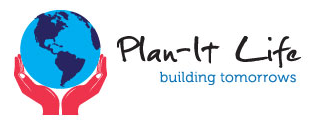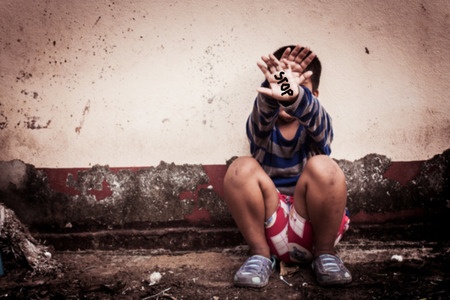Child Abuse: What Counts, What’s Adjacent, and What’s Expected of Mandated Reporters
Anyone under 18 years old is a child. Each year, the United States receives at least three million child abuse reports. It is essential to make people understand the widespread child abuse and the causes and reasons for its occurrence.
At the state level, child abuse or neglect can be defined by both criminal and civil statutes. At the federal level, there is child abuse when a caregiver or parent inflicts harm or fails to provide immediate aid to the child. Such action or lack thereof can cause severe physical or emotional damage to the child. It usually results in serious harm, exploitation, sexual abuse, or even the child’s death.
5 Types of Child Abuse or Maltreatment
Child abuse is not just about inflicting physical harm to the child. Many forms of maltreatment may leave adverse effects on the physical and mental well-being of a child. Following are five different forms of child abuse or maltreatment.
1. Physical Abuse
A child suffers from physical abuse when the caregiver or parent inflicts non-accidental bodily injury to the child. Any act that harms the child’s body is physical abuse. In California, acts and circumstances that put a child’s welfare or health in danger are considered physical abuse. The following are forms of physical abuse:
– Slapping or punching that leaves bruises or marks on the child’s body
– Kicking which knocks down, marks or bruises
– Beating a child using an object
– Burning with anything
– Biting
– Twisting a child’s arm that leaves bruises and/or fractures
– Shaking the child to the point of pain, headaches, and/or disorientation
– Submerging a child’s head underwater
– Shoving or throwing the child
– Pinning down a child
– Pinching hard
Other things that may be considered physical abuse (even if they are not directly physical) include:
– Displaying intimidating behaviors toward a child
– Reckless driving
– Showing destructive behaviors such as breaking, throwing, or destroying things
– Displaying a paddle or belt
– Standing over a child
– Demonstrating physical intimidation
– Using scare tactics to discipline a child
Keep in mind that a child needs adequate guidance and supervision during their formative years. Choosing not to guide them to the right path is a form of abuse. It is also inappropriate to make the child do excessive work or force them to fulfill a crazy demand.
2. Neglect
What is considered neglect? When the child’s parent or caregiver does not provide any of the following physical needs to the child it’s considered neglect:
– Adequate shelter
– Healthy food and nourishment
– Guidance or supervision
– Medical care
It is the primary duty of the caregiver or parent of the child to provide for those said needs. It can help ensure the child’s well-being, safety, and health. Failure to do so is a clear case of neglect.
It is also essential to provide proper education for the child. It can help them on their journey to becoming responsible adults and dependable members of society.
3. Emotional and Psychological
A child’s emotions can affect their mental health. Emotional maltreatment creates a negative effect on the child’s psychological health. It also brings an adverse impact on the well-being of the child. The results can be seen in the substantial change in the child’s behavior, cognition, or emotional response. Injury evidenced by anxiety may also be due to emotional maltreatment. Some actions may not be forms of abuse but may lead to psychological maltreatment. These actions include:
– Refusing to speak with the child
– Ignoring
– Isolating
– Terrorizing
– Corrupting
– Withholding
– Degrading
– Shaming
– Belittling
– Demeaning
– Criticizing
– Insulting
– Rejecting
– Teasing
4. Sexual Abuse
Child sexual abuse involves sexual acts with a minor. Children are not mature enough to consent to any sexual acts toward them. Engaging in sexual acts with a minor is a crime.
Physical contact or intercourse is not the only thing that constitutes sexual abuse against a child. Sexual abuse with a child occurs when any of the following takes place:
– Sex trafficking
– Creating, in possession of, or distributing pornographic movies or images of children
– Making an obscene phone call, having inappropriate digital interaction, or sending vulgar text messages to a child
– Masturbating in the presence of a minor or coercing the minor to masturbate
– Fondling
– Doing an exhibition or exposing oneself to a child
– Performing any sexual acts with a minor, including anal, oral, or vaginal
– Any other sexual acts that can be detrimental to the physical, emotional, or mental welfare of a child
5. Abandonment
Abandonment is when a parent or caregiver leaves the child in a particular place and decides never to return. This can be worse than neglect and usually, no one knows the identity and whereabouts of the caregiver. There is a case of abandonment under the following circumstances:
– A child sustains serious harm when the caregiver leaves the child unattended
– The parent or caregiver has failed to maintain contact with the child
– The parent or caregiver has failed to provide adequate support to the child for a certain period
Reporting Abuse
Private citizens are not required but are encouraged to report any abuse. Mandated reporters with therapeutic or work relationships are required to report when they see signs of child abuse. So, who are mandated reporters?
Mandated Reporters
Mandated reporters have an individual duty to report known or suspected abuse or neglect relating to children, elders, or dependent adults. They must make the initial abuse report via phone within twenty-four hours and a follow-up report within thirty-six hours.
The Child Abuse and Neglect Reporting Act (CANRA) compels certain professionals to report suspected or actual child abuse and/or neglect. The mandatory reporters under CANRA are:
– Child visitation monitor
– Clergy members, including a priest, religious practitioner, rabbi, and minister
– Firefighter, except for those who work as volunteers
– Head Start program teacher
– Police officer
– Public assistance worker
– Social worker, parole officer, or probation officer
– Teacher’s assistant or aide in a public or private school
– Administrator of a private or public day camp
– Administrator or employee of youth organization, recreation program, or center
– Employee of a daycare facility, security department, or school district police
– Foster parents
– Health care workers, medical examiners, paramedics, or peace officers
It is a must for mandated reporters with work or therapeutic relationships to report the child abuse. According to state law, if the mandated reporters make an error in reporting, they don’t have civil or criminal liability. However, they will be held responsible for failure to report child abuse.
The child abuse hotline is 800.540.4000. Your identity remains confidential until there’s a need to give it to the council, defense attorney, social worker, and other people that will work on the case. However, private citizens can submit an anonymous report.
Help for the Victims
As adults, the victims may still experience shame due to the abuse. At the beginning of therapy, it is necessary to acknowledge that they are victims of abuse. Mindfulness meditation can help, and this practice usually uses breathing as an anchor. It would be best if you were careful when using mindfulness to help the victims. Take note of the following:
– The victim of sexual abuse may still be a victim of the debilitating shame that came with the experience of being abused.
– Victims that were gagged, pinned down, or detained in a small space may experience shortness of breath when they focus on their breathing.
– Those who experience hatred of their bodies may find focusing on their breathing brings them too close to their bodies.
– Those who experience tremendous physical pain brought by flashbacks, memories, or triggers may want to avoid focusing on their bodies.
– Victims of sexual or physical abuse may want to forget what happened to their bodies.
To help the victims live a successful life, it is best to take things one step at a time. Remember, at the beginning of therapy, acknowledging your client is a victim of abuse forces your client to admit that they have been victimized.








